K Bedford restoration project: Part 2
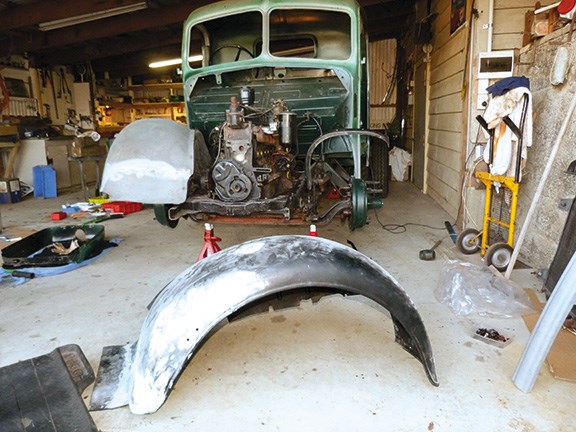 When this mudguard goes on the next time, we're hoping it'll be for good.
When this mudguard goes on the next time, we're hoping it'll be for good.

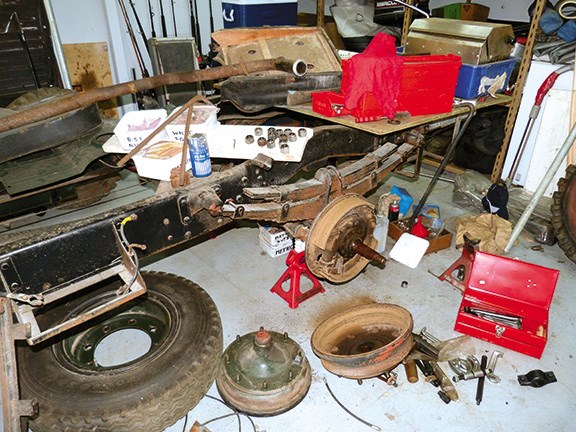 Much scraping and cleaning took place earlier in the project.
Much scraping and cleaning took place earlier in the project.

 Murray Firth applies that all-important undercoat.
Murray Firth applies that all-important undercoat.

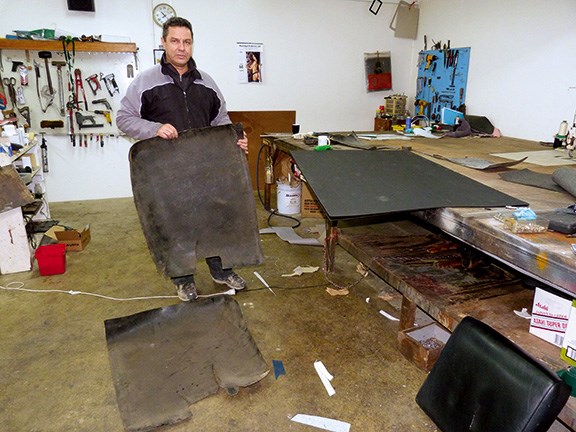 Brett Southey preparing a piece of authentic cardboard headlining at Waikumete Car Upholsterers workshop.
Brett Southey preparing a piece of authentic cardboard headlining at Waikumete Car Upholsterers workshop.

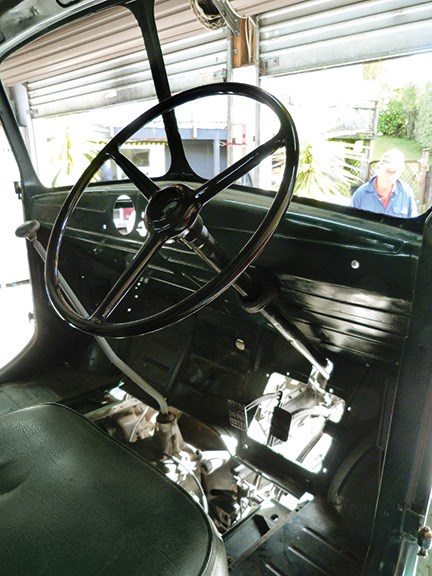 There's still a bit of work to do before the instruments can be fitted.
There's still a bit of work to do before the instruments can be fitted.

 It's starting to look more complete, but this is only a test fit and it's all coming off again.
It's starting to look more complete, but this is only a test fit and it's all coming off again.


|
|
When this mudguard goes on the next time, we're hoping it'll be for good.
|

|
|
Much scraping and cleaning took place earlier in the project.
|

|
|
Murray Firth applies that all-important undercoat.
|

|
|
Brett Southey preparing a piece of authentic cardboard headlining at Waikumete Car Upholsterers workshop.
|

|
|
There's still a bit of work to do before the instruments can be fitted.
|

|
|
It's starting to look more complete, but this is only a test fit and it's all coming off again.
|
Join Lyndsay Whittle in part two of his epic quest to restore an old K Bedford truck. Will he or won’t he ever get it back on the road? Read and find out.
A lifelong association with K Bedfords was cemented for me in the 1950s by a hard-case millionaire called Jules. This man and his immaculately-kept K were always a source of wonderment to me, thus the restoration of this old K will be completed with him foremost in mind.
Following on from part one of the restoration as told in last month's edition of Deals on Wheels, perhaps I should recap a little…
Bedford K timeline
1952 Cab and chassis manufactured in England
1933 Truck purchased by resident of Methven in Canterbury
1958 Two owners (Oamaru and Dunedin)
1975 Sold to a resident of Kerikeri who later moves to Northcote
1979 Sold to me
1985 I put the truck off the road for the Christmas holidays for rust work
1988 Cab and components separated from chassis
1989 Cab parts and mudguards lost for several months
1989 Above parts miraculously recovered
1992 Engine reconditioned and chassis sandblasted and painted
1997 Cab sandblasted, primed, and reunited with cab and chassis
And that folks, aside from the odd bit of work, like reconditioning the steering box, is where the story would have ended, had it not been for the generosity of a lot of kind folk who, for the past 17 years, have housed the old truck either at no cost or for a very nominal fee.
My progress
When part one of this story went to print, we'd just had a major breakthrough getting the brakes working after nearly thirty years of standing idle. The tandem master cylinder had been rebuilt, as had the front wheel cylinders and the rear bisectors.
The one-and-a-half tonne K's brakes aren't vacuum-assisted as are the larger M and O models, which operate on a Clayton Dewandre booster and cost the earth at reconditioning time. Happily that wasn't a requirement in this instance.
Fortunately, the engine had been reconditioned in the '90s and has been statically run a number of times during the ensuing years.
All recent mechanical work (since April) has been carried out at my mate Dean Southey's workshop. However, we decided once the mechanical side of things were sorted, we could relocate to Murray's place, where we'd be able to spray body parts like the bonnet, grille, and mudguards.
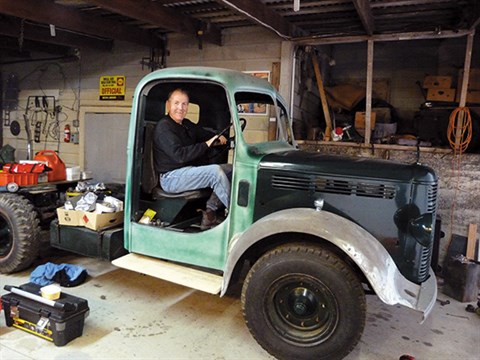
It's true that anybody looking from the outside in would be hard-pressed to see any transformation taking place, as a cursory sighting of a photo of the truck ten or fifteen years ago would reveal little progress and might even cause the onlooker to think the project's gone backwards — fortunately, we know differently.
During the period of 1997 — April 2014, the truck looked fairly well intact, as by that time it had had its radiator fitted in the grille and had anti-freeze in the water, but although the engine would run, the truck didn't have any brakes and the clutch was frozen.
To add to the woes in that area, I had lost the brackets that the clutch and brake pedal shaft were mounted on. It appears there are two entirely different shafts for the more-common crash box model and my synchromesh truck.
In any event, a call to my friends at Horopito Motors eventually sorted the problem out and we now have brakes and a clutch operating for the first time in nearly thirty years.
Painting the K
The spray booth at Murray's place is a disused hothouse, providing perfect temperature control, as it heats up to and ideal 20-28 degrees with only the slightest bit of sunshine, and if it gets too hot in there, Murray simply opens the roof vent – perfect!
Unfortunately, the hothouse is too small to accommodate a complete vehicle, so cab and chassis spraying has to wait until better weather arrives.
Two days before writing these lines, we were fortunate enough to have a half-decent day in which we were able to tow the K around to a north-facing sheltered part of Murray's property that seems to have its own micro-climate.
While it probably wouldn't have been warm enough to apply a finish coat, it suited our needs to at least get a decent undercoat in place. Murray does the painting; however, the other day he kindly let yours truly loose with a spray gun in order to get and etch primer on the chassis that his 'apprentice' had previously spent a couple of days sanding.
As far as other work in the pipeline is concerned, we've ordered a wiring loom from Bygone Bedford Bits in England, which should be here in a month or so and we have got underway with the cardboard headlining, courtesy of Deane's brother, Brett Southey and Waikumete Car Upholsterers.
And all this brings me to the point of holding true to my promise in part one –– that each month I would supply a little snippet of helpful restoration information. Well, here it is…
When embarking on any restoration project, make sure you have a long list of talented people to assist you!
Follow Lyndsay's entire project:
Check out next month's update in issue 251 of Deals on Wheels magazine. Subscribe here.
Keep up to date in the industry by signing up to Deals on Wheels' free newsletter or liking us on Facebook.

.jpg)

.jpg)

.jpg)

